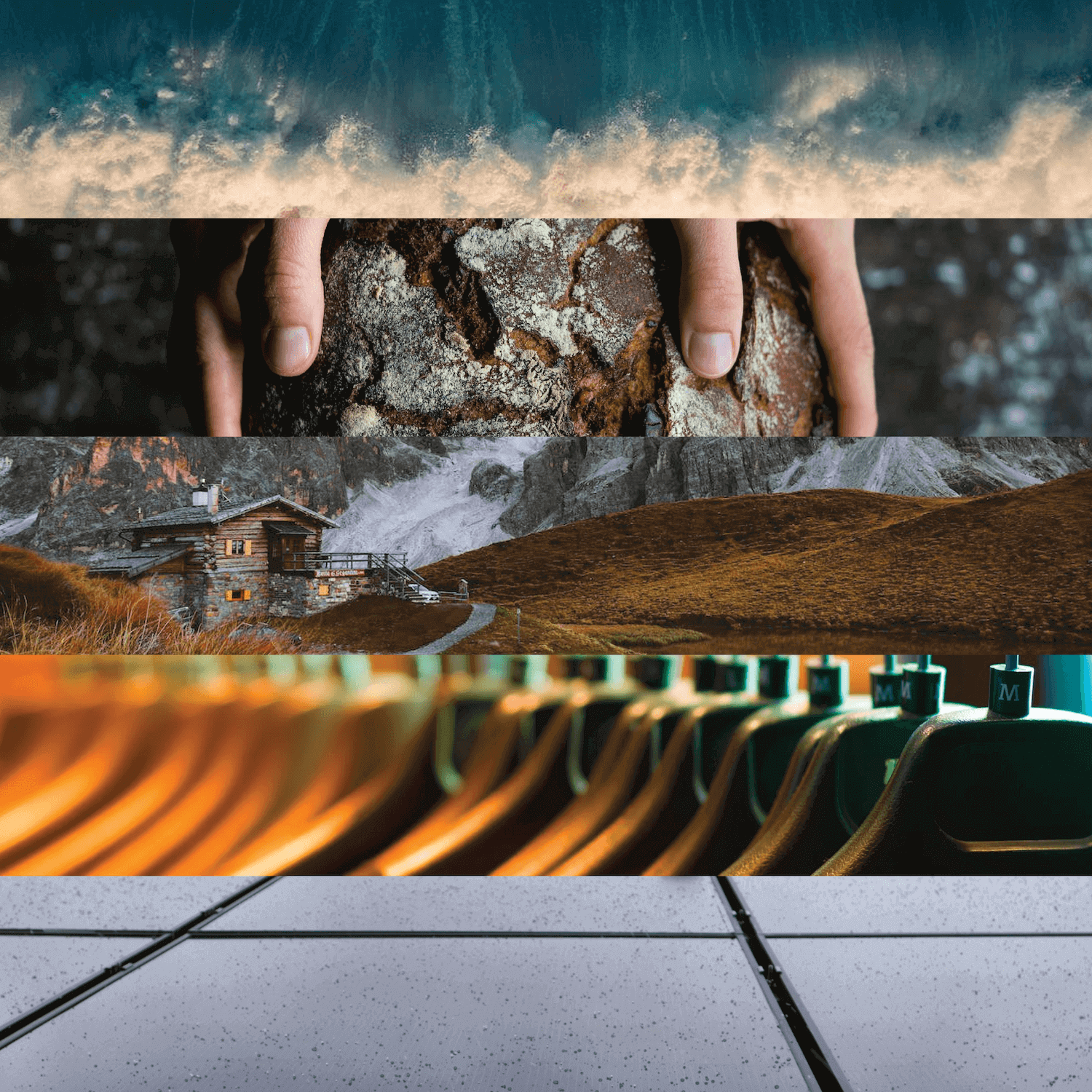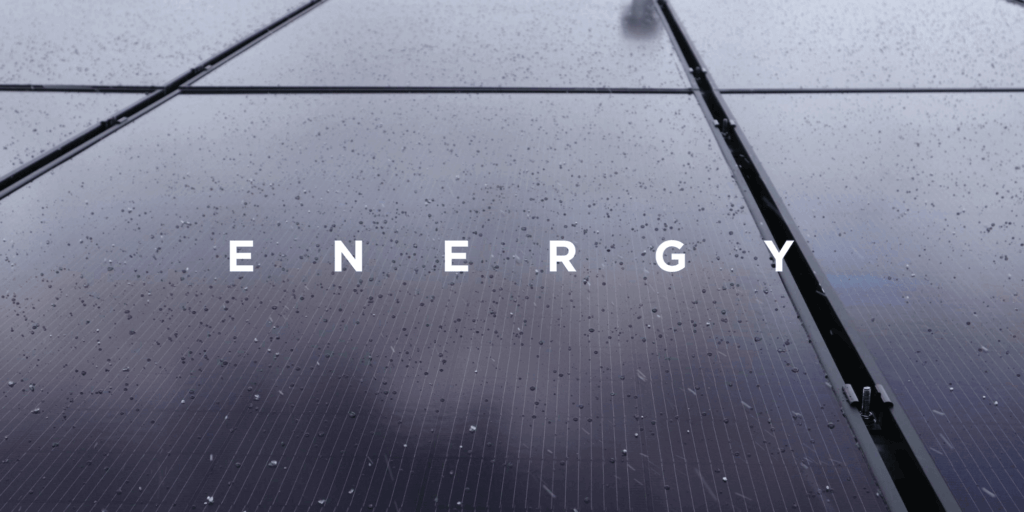
The principle of self-sufficiency—providing for your own needs without external assistance, relying on your own resources and skills—offers the opportunity to have confidence to survive and thrive on your own along with a greater sense of control and security.
At Blue Raven Solar, this desire for self-sufficiency is something we see often, and we frequently enjoy customers’ excitement at gaining energy independence. Here, we’ll dive deeper to explore what self-sufficiency means across our most basic human needs: water, food, shelter, clothing, and energy.

Water
Water is essential to all life. It’s necessary for critical functions of the human body and is a key factor in the flow of our planetary system and how life on Earth operates. Without usable water, life on our planet would come to an immediate end, making it an important consideration in any self-sufficient living strategy.
Becoming water self-sufficient means you can meet your individual water needs without relying on the main public water supply. This can be a way to save money, reduce your environmental impact, and prepare for emergencies. Ways to become water self-sufficient, might include:
- Reducing your current water usage: Adopt water-saving habits and devices to lower your water demand to make the most of your on-site water supply. Installing low-flow shower heads, faucet aerators, and other water-saving devices can reduce your water flow rate. You can also reuse water whenever possible, such as using grey water for flushing or watering plants. Grey water refers to wastewater generated from showers, baths, sinks, and washing machines but does not include wastewater from toilets (this is called black water) and may contain soap, dirt, grease, food particles, hair, and other organic matter.
- Using on-site water: Collect and store rainwater, stormwater, and recycled grey water for various purposes, such as washing, gardening, and flushing toilets. You will need to install storage tanks of sufficient capacity and connect them to your roof gutters or other containment areas. You may also need to filter and purify the water before using it for human consumption or sensitive applications.
- Using eco-friendly toilets: Another way to reduce your water consumption and waste is by switching up your toilets. Low-flush toilets are an easy adjustment as they work like standard ones, simply using less water. If you’re open to a bigger change, you can consider dry or composting toilets, which turn human excrement into organic fertilizer. Composting toilets do not require flushing and can save up to 60 liters of water per person per day. When installing a composting toilet, be sure to research the local and state regulations in your area.

Food
Becoming food sufficient means you can produce most or all of your food on your own land or in your own home. This can be a way to save money, eat healthier, reduce your environmental impact, and have supplies on hand for emergencies. Here are a few ideas on how to become food sufficient:
- Growing your own food: Start a garden—even if it’s small—and grow the vegetables, fruits, herbs, and grains you eat regularly. You can use organic methods, compost, and mulch to improve the soil and conserve water. Vertical gardening, container gardening, or hydroponic systems are good options if you’re limited on space.
- Preserving the food you grow: Extend the shelf life of your food by using various methods of preservation, such as canning, freezing, drying, fermenting, pickling, or smoking. Preserving food will allow you to enjoy your harvest throughout the year and have an on-demand backup supply.
- Cooking from scratch: You can reduce your reliance on processed foods and additives by cooking your own meals from scratch using fresh ingredients from your garden. Cooking from scratch gives you more control over the ingredients used, and is often much more affordable than eating out or buying pre-packaged foods.

Shelter
Shelter self-sufficiency can be achieved by building, maintaining, and repairing your own home. To improve your shelter try:
- Embracing frugality: You can’t hope for self-sufficiency while still owing money to banks, landlords, or contractors. This makes it important to start by living within your means, paying off your debts, and committing to more disciplined spending habits.
- Building with eco-friendly or natural materials: You can make your home more self-sufficient by using recycled materials or locally sourced materials to build or renovate. Eco-friendly materials can help you save energy, water, and money by improving the insulation, ventilation, and efficiency of your home. You can also use natural materials such as wood, stone, straw, or clay, which are durable, renewable, and biodegradable.
- Learning basic carpentry and plumbing skills: Developing the ability to do basic carpentry and plumbing tasks yourself instead of hiring professionals can help you build or repair furniture, cabinets, shelves, doors, windows, walls, floors, roofs, pipes, faucets, toilets, sinks, showers, or bathtubs with basic tools, materials, and skills.
- Maintaining and upgrading your home regularly: You can prevent major problems and expenses by maintaining and upgrading your home regularly. Check for leaks, cracks, pests, mold, rot, corrosion, wear and tear, and malfunctioning appliances to fix small issues quickly—preventing them from becoming bigger problems down the road. A home energy efficiency check can also make a big difference with a few small changes. In addition, you can improve the appearance, comfort, safety, and value of your home by painting the walls, replacing carpets, installing smoke detectors, adding insulation, or upgrading lighting.

Clothing
Producing, repairing, and reusing your clothing without depending on external sources or stores is how you can become clothing self-sufficient. This can be a way to save money, reduce your environmental impact, and express your own unique creativity and style. Ways to become clothing self-sufficient include:
- Reusing and repurposing your clothes: Whenever your clothes get too old, too small, or you just need a change, reuse and repurpose your clothes. You can alter them by cutting, hemming, resizing, or reshaping. You can also transform them into something new by combining different pieces of fabric, adding new features, or using them for other purposes such as cleaning rags, quilts, rugs, or bags.
- Repairing and mending your clothes: Enhance your clothing self-sufficiency by making your clothing last longer. Repair and mend your clothes whenever they get torn, worn out, or stained. You will need to use a needle and thread or a sewing machine to fix holes, rips, seams, and/or hems. You can also use patches, embroidery, applique, or darning to cover up or decorate damaged areas.
- Sourcing or growing your own fibers: You can also source or grow your own natural fibers, such as cotton, hemp, flax, wool, or silk, to make your own fabrics. Recycled materials such as old clothes, sheets, curtains, or bags are excellent sources of fabrics you can use to create new-to-you clothing.
- Dying your own fabrics: Using natural dyes from plants, fruits, vegetables, spices, or minerals you can dye your own fabrics. Begin by washing and preparing the fabrics to help the dye adhere and boiling, soaking, or fermenting the natural dye sources to extract the dye. You can then experiment with different colors, patterns, and techniques.

Energy
There are many ways to become energy self-sufficient, and they all rely on the Earth’s abundant renewable resources, including solar, wind, geothermal, and hydropower. Generating and using your own electricity or heat without relying on the utility grid or other external systems is a primary concern of self-sufficient living. At Blue Raven Solar, we focus on the energy self-sufficiency afforded by solar! Here are the steps we recommend when switching to solar:
- Understanding your energy needs: Calculate how much electricity you use, on average, and how much you want to offset it with solar energy. Blue Raven Solar’s experts will help you evaluate your current energy usage through past and current utility bills and determine how many panels you need to secure energy independence.
- Designing a solar system fit to your needs: Blue Raven Solar’s experts will design an optimized system perfectly suited to your location, lifestyle, budget, and energy goals. You can even include optional home storage solutions to limit your dependence on the local utility grid.
- Installing solar modules and equipment: Once your system has been designed, Blue Raven Solar’s in-house team will install the necessary top-tier solar energy equipment required. Equipment includes the solar panels mounted to your roof which will convert sunlight into direct current (DC) electricity, a power inverter to convert DC into the alternating current (AC) electricity required to power everything in your home, and other equipment to help control and monitor your energy generation and consumption.
The final step is to enjoy your solar energy self-sufficiency as you reap its benefits. These include saving money on your electricity bills, reducing your carbon emissions, increasing your property value, and being prepared for power outages or emergencies.
Achieving Self-Sufficiency
Becoming more self-sufficient in meeting your basic human needs is highly achievable—and each individual who becomes water, food, shelter, clothing, and energy independent also reduces the demands on existing systems and resources. Together we can make a global impact.
To start your journey toward energy self-sufficiency, reach out to the Blue Raven Solar team today and get a free rooftop solar quote.



Sorry, the comment form is closed at this time.